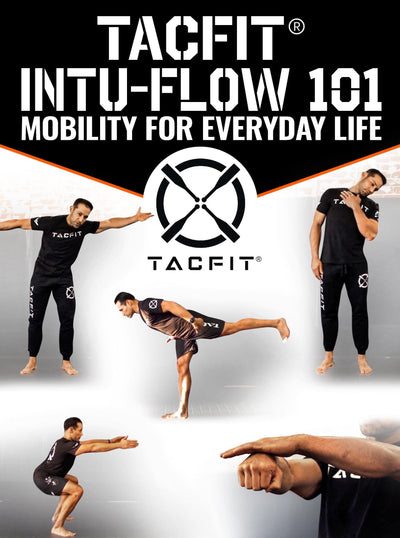300 Kettlebell Swings a Day
A workout plan centered on performing 300 kettlebell swings a day can be a challenging and effective way to improve your overall fitness. Kettlebell swings are a dynamic exercise that engages multiple muscle groups and provides cardiovascular benefits. However, it's crucial to approach this plan with caution and ensure you have the necessary strength and technique to perform the swings safely.
To begin, it's essential to choose an appropriate kettlebell weight for your fitness level. Start with a lighter kettlebell if you're a beginner, and gradually increase the weight as you become more comfortable with the movement. Proper form is critical when doing kettlebell swings. Stand with your feet shoulder-width apart, hinge at the hips, and keep your back straight as you swing the kettlebell between your legs. Use the power generated by your hips and core to propel the kettlebell forward and up to shoulder height. Be sure to maintain a strong grip on the kettlebell throughout the movement.
A daily goal of 300 kettlebell swings can be divided into sets and repetitions to make it more manageable. For instance, you can aim for six sets of 50 swings, taking short breaks in between to catch your breath and maintain good form. Alternatively, you can break it down into 10 sets of 30 swings. This allows you to focus on each set's quality and reduce the risk of injury due to fatigue.
This workout plan is not just about swinging the kettlebell; it's also essential to incorporate proper warm-up and cool-down routines. Start with dynamic stretches and mobility exercises to prepare your body for the swings. After completing the swings, engage in static stretching and foam rolling to reduce muscle soreness and improve recovery.
Consistency is key to seeing results with this workout plan. Over time, you can increase the weight of the kettlebell or the number of swings you do each day to challenge yourself further. Additionally, complementing this plan with a balanced diet and sufficient rest is crucial for muscle recovery and overall well-being. There are also an ample amount of complementary or alternatives to kettlebell swings.
Kettlebell Swing Alternatives
Deadlifts
Execution: Stand with your feet hip-width apart, bend at the hips and knees to lower the barbell to the ground, then stand up by extending your hips and knees. Keep your back straight throughout the movement.
Benefits: Deadlifts are a compound exercise that primarily works the posterior chain, including the lower back, glutes, hamstrings, and core. They also engage the forearms and grip strength.
Variations: You can perform conventional, sumo, or Romanian deadlifts to target slightly different muscle groups.
Kettlebell Swings with a Dumbbell or Resistance Band
Execution: If you don't have a kettlebell, you can use a dumbbell or a resistance band instead. Hold the dumbbell with both hands or attach the resistance band to a secure anchor point and swing it with the same hip hinge motion.
Benefits: This alternative allows you to replicate the kettlebell swing's benefits, targeting the glutes, hamstrings, lower back, and core while also improving grip strength.
Variations: Adjust the weight or resistance band tension to suit your fitness level.
Romanian Deadlifts (RDLs)
Execution: Hold a barbell, dumbbells, or kettlebells with an overhand grip in front of your thighs. Keeping your knees slightly bent, hinge at the hips to lower the weights until your torso is parallel to the ground, then return to a standing position.
Benefits: RDLs primarily work the hamstrings, glutes, and lower back while also engaging the core and improving hip mobility.
Variations: Experiment with different types of equipment and grip variations for added challenge.
Goblet Squats
Execution: Hold a dumbbell or kettlebell close to your chest with both hands. Stand with your feet shoulder-width apart and perform squats, lowering your body as if sitting back into a chair, and then return to a standing position.
Benefits: Goblet squats are an excellent lower body exercise that engages the quads, glutes, hamstrings, and core, while also promoting better posture and balance.
Variations: You can vary the weight and depth of your squats to intensify the workout.
Bulgarian Split Squats
Execution: Stand a few feet in front of a bench or sturdy surface. Place one foot behind you on the bench and lower your body into a lunge position, keeping your front knee directly above your ankle. Return to the starting position.
Benefits: This single-leg exercise targets the quads, hamstrings, glutes, and hip flexors. It also helps improve balance and correct muscle imbalances.
Variations: Adjust the bench height or add dumbbells for more resistance.
Incorporating these alternative exercises into your routine can provide variety while still targeting similar muscle groups as kettlebell swings. Be sure to choose the alternatives that align with your fitness goals and equipment availability, and always maintain proper form to reduce the risk of injury and maximize results.
Kettlebell Swings are an extremely easy-to-learn, beneficial exercise that everyone should incorporate into their workout, whether it’s 100 kettlebell swings, 50 kettlebell swings, 200 kettlebell swings, or even the 10000 kettlebell swing challenge you can build entire workout routines based around kettlebell swings!
When implemented correctly, a workout plan focused on 300 kettlebell swings a day can help improve your strength, endurance, and cardiovascular fitness. However, it's essential to prioritize safety and form throughout the process, and it may be advisable to consult with a fitness professional or trainer to ensure you're using proper technique and avoiding any potential injuries.
Did you find the blog helpful? If so, consider checking out other guides:
- What Do Kettlebell Swings Work?
- Benefits of Kettlebell Swings
- Kettlebell Swing Form
- How to Do Kettlebell Swings
- Kettlebell Swings with a Dumbbell
- How Many Kettlebell Swings
- Kettlebell Pullover
- Kettlebell Pull Exercises
- Kettlebell High Pull Muscles Worked
- Pull Throughs and Kettlebell Swings
- Kettlebell Split Squat
- Overhead Squat with Kettlebells
- Double Kettlebell Squat
- Pistol Squat on Kettlebell
- Kettlebell Squat Clean





